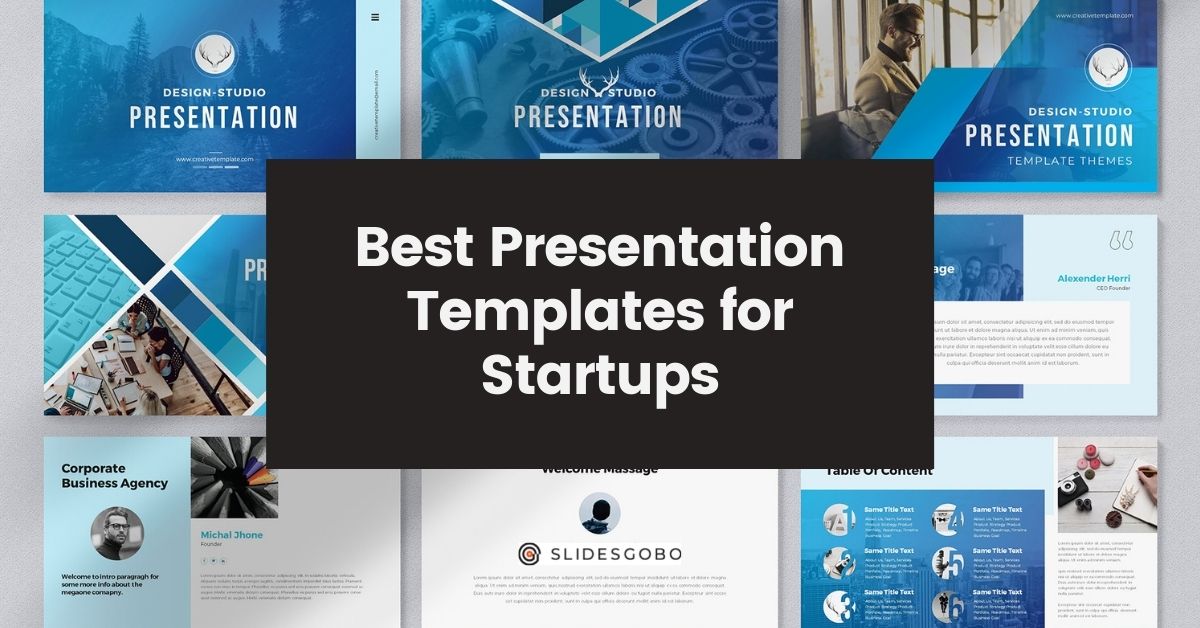Effective presentations have always been important communication tools in the business world. A productive presentation can help individuals deliver their ideas clearly and concisely and engage and persuade their audience.
In recent years, with the rise of technology, the way we deliver presentations has changed dramatically. Virtual presentations are now commonplace, and it is essential to know how to deliver a strong presentation online.
A successful virtual presentation requires careful preparation and practice. However, by following these effective virtual presentation tips, you can ensure that your online presentation positively impacts your audience.
To improve your virtual presentations, consider these ideas to captivate and engage your audience: Make them interactive by using live polls, Q&A sessions, and collaborative whiteboards for real-time participation. Also, use captivating visuals and concise slides to illustrate your points better.
Read this article to learn more tips and tricks for improving your online presentations. It provides strategies to improve your presentation structure and use technology to make your virtual presentation impactful and memorable. Use these insights to deliver your message clearly and engage your audience better.
Explore this article to know more about how to make a virtual presentation interactive. Understand these virtual presentation ideas to better the engagement and effectiveness of your online presentations.
Table of Contents
What Is a Virtual Presentation, and How Can It Help Your Business?

A virtual presentation is a type of presentation where the presenter and audience are not in the same physical space. Instead, they communicate via some form of technology, such as teleconference, webinar, or video conferencing.
It has a number of advantages over traditional, in-person presentations. For one, they can be much more cost-effective since you don’t have to incur the expense of travel. They also offer greater flexibility since participants can join anywhere worldwide.
Virtual presentations have become increasingly popular in business, offering several advantages over traditional face-to-face presentations.
Firstly, virtual presentations allow businesses to reach a wider audience, as they can be easily shared online and viewed by anyone with an internet connection.
Secondly, virtual presentations are more cost-effective than face-to-face presentations, as there is no need to cover travel costs or hire venue space.
Lastly, virtual presentations allow businesses to track viewer engagement and collect data on who is watching the presentation and for how long. This information can be used to improve future virtual presentations and ensure they are more targeted and effective.
Overall, virtual presentations offer a handful of advantages for businesses, making them an essential tool for any modern organization.
What Are Its Benefits Over Traditional Presentations?

Virtual presentations have various advantages over traditional, in-person presentations. The most obvious benefit is that they allow presenters to reach a wider audience. With a traditional presentation, only those who are physically present can view the content.
With a virtual presentation, however, the audience is limited only by the number of people who can log onto the system. Additionally, virtual presentations offer greater flexibility in terms of format and content.
Presenters can be more creative in their approach, incorporating multimedia elements and interactive features that engage the audience and enhance the overall experience. Eventually, virtual presentations are more cost-effective than traditional presentations, as they eliminate the need for travel and accommodations. Overall, it will provide a slew of benefits that should make them an attractive choice for both presenters and audiences.
Effective Virtual Presentation Tips to Make Your Presentation More Engaging

Engaging your audience and keeping their attention is important when giving a presentation. This can be challenging enough when you’re presenting in person, but it can be even more difficult when you’re presenting virtually.
Luckily, a few effective virtual presentation tips can help you engage your audience and ensure your presentation’s success.
Let’s talk about some of the most essential tips you should know.
- Make a great first impression.
- Use a professional webcam and microphone.
- Dress professionally for your video call.
- Make sure the lighting in your room is good.
- Test your internet connection before your presentation.
- Use gestures to help emphasize your points.
- Use high-quality visuals to support your message.
- Keep your presentation concise.
- Be prepared to answer questions from the audience.
- Practice, practice, practice.
- Stay calm and confident throughout the presentation.
- Use the best presentation templates to impress your audience.
Make a Great First Impression
Just as with an in-person presentation, you want to make a great first impression when giving a virtual presentation. This means starting off on the right foot by opening with a strong hook that will capture your audience’s attention.
You can do this by starting with an interesting statistic, asking a rhetorical question, or telling a personal story. Once you have your audience’s attention, it is important to set the stage for what they can expect from your presentation. Give them an overview of the main points you’ll be covering, and make sure to stress the importance of your topic.
By taking the time to make a strong first impression and set the stage for your presentation, you’ll be well on your way to giving an effectual virtual presentation.
Use a Professional Webcam and Microphone
If you’re using a built-in computer camera and microphone, your audience will likely get distracted by the poor quality. To avoid this, use the best professional webcam and microphone. This will ensure that your audience can see and hear you clearly, making it easier for them to focus on your presentation.
A professional webcam with a microphone can be bought for around a small amount. If you use a laptop, you may need to purchase an additional mount in order to position the webcam at the correct angle. For desktop computers, many types of webcams are available, so it’s important to do some research to find one that will suit your needs.
Investing in a good-quality webcam and microphone ensures that your online presentations are clear and professional.
Dress Professionally for Your Video Call
It is essential to remember that first impressions matter, even on a video call. You want your audience to see you as a professional, so you should dress accordingly.
It is advisable to wear a professional dress during the meeting or presentation as it will make you feel more confident and comfortable. Of course, you don’t need to wear a suit or anything too formal, but you should avoid wearing sweats or pajamas.
Choose clothes you would feel comfortable wearing to an in-person meeting or presentation. This way, your audience will see you as a competent professional that they can take seriously.
Make Sure the Lighting in Your Room Is Good
The lighting in your room can play a big role in how well your virtual presentation is received. If you’re presenting in a dark or dim room, it can be more challenging for your audience to see you and your slides.
Conversely, if you’re in a bright room with intense overhead lighting, it can be difficult for your audience to see your slides.
The best lighting for online meetings is a mix of natural light and artificial light. If you can, open curtains or blinds to let in some natural light. Then, supplement that light with a desk lamp or floor lamp.
You want to avoid having any strong light sources behind you, as that can create a glare on your screen. By using a mix of natural and artificial light, you’ll create an optimal lighting situation for both you and your audience.
Test Your Internet Connection Before Your Presentation
Giving a presentation can be nerve-wracking enough without having to worry about technical difficulties. A spotty internet connection is one of the most common problems that can occur during an online presentation, and it can make it very difficult for both the presenter and the audience to engage with the material.
Fortunately, the simple solution is to always test your internet connection before you start. By ensuring that your connection is solid and stable, you can avoid any significant issues during the presentation. And if you do run into any problems, you’ll be prepared to troubleshoot them quickly and efficiently.
So, next time you’re getting ready to give a presentation, don’t forget to check your internet connection first. It could make all the difference in delivering a successful presentation.
Use Gestures to Help Emphasize Your Points
When you’re giving a presentation, it’s important to use your body language to help emphasize your points. This can be a little more difficult when you’re speaking virtually, but it’s still possible.
Use gestures to help draw attention to what you’re saying and to help emphasize your points. For example, if you want to highlight a particular point, you could use a hand gesture to draw attention to that area of the screen. Or, if you’re making a contrast between two ideas, you could use open and closed palms to show the difference.
Using gestures, you can help ensure that your audience follows along and engages with your presentation.
Use High-Quality Visuals to Support Your Message
No matter what type of virtual presentation you’re giving, visuals are always going to be an important part of your overall presentation. After all, people are more likely to remember what they see rather than what they hear. So, ensure your visuals are high quality and support your overall message.
If you’re presenting a PowerPoint presentation, ensure the pictures and graphics you use are relevant to your topic. Avoid using too many words on your slides—people will have a hard time digesting all that information.
If you’re giving a webinar, consider using a live video feed to help engage your audience. This is especially effective if you’re presenting to a large group of people.
In either case, make certain that your visuals are high quality and add value to your presentation.
Keep Your Presentation Concise
It is easy to get caught up in the details when giving a presentation, but it is important to remember that your audience’s attention span is limited. Keep your presentation concise by focusing on the most essential points and leaving out any unnecessary information. This will help ensure that your audience remains engaged throughout the presentation and will be more likely to remember the key points you want them to take away.
When preparing your presentation, consider the most important points and what can be left out. It may also be helpful to practice presenting in front of a small audience or in front of a mirror to get a feel for how long your presentation should be.
Remember, keeping your audience’s attention is essential for delivering a successful presentation.
For easier-to-understand PowerPoint presentations, check out some of the best presentation templates available from FlySlides. Discover a wide range of pre-made presentation templates.
Be Prepared to Answer Questions from the Audience
There’s always a chance that the audience will ask you questions, no matter how much you think you know your content.
It might be difficult to get noticed in a virtual environment, especially if there are so many voices clamoring for attention. But if you’re prepared to answer questions, you’ll be able to keep the audience’s attention focused on you.
When you’re planning your presentation, think about what questions the audience might ask and have answers prepared. This way, you’ll be able to keep the conversation going even if there are technical difficulties or other interruptions.
Practice, Practice, Practice
The more you practice, the better you’ll get at delivering talks. So, set aside some time to review your presentation several times before giving it. This will help you to identify any areas where you need to improve or make changes.
It will also help you become more comfortable with the material and deliver it more confidently. Practicing will also allow you to fine-tune the timing of your presentation so that it flows smoothly.
Remember, online presentations require a different approach than in-person presentations, so take the time to prepare and practice accordingly. With a little effort, you can deliver an impressive and effective presentation.
Stay Calm and Confident Throughout the Presentation
When you’re giving a virtual presentation, it’s important to remember that your audience can’t see your nonverbal cues. This means you need to be extra aware of your tone and keep your energy up throughout the presentation.
If you sound bored or disinterested, your audience will be too. Keep your energy level up by speaking with enthusiasm and interest, and slow down so your audience can keep up with you.
Remember that you’re still presenting to a group of people, even if they’re not in the same room as you are. By being aware of your tone and keeping your energy up, you can give a successful virtual presentation.
Use the Best Presentation Templates to Impress Your Audience
Best presentation templates always come down to two things: the content and the way it is delivered. If you’re using an excellent presentation slide template like PowerPoint, Google Slides, or Keynote, guarantee your presentation is well-designed and follows a consistent theme.
If you’re not using a presentation template, now is the time to start. Your presentation should be clear, concise, and easy to follow. The finest presentation templates will help you deliver your message in a way that is visually appealing and easy to understand.
They can also help you save time by providing a consistent format for your slides. Investing in a good presentation template will make your presentations more effective and efficient in the long run.
Follow these 12 virtual presentation ideas and tips to create a truly outstanding virtual presentation if you’re unsure about how to make your virtual presentation interactive, fear not! This article is here to guide you through the process.
The Don’ts of Virtual Presentations

Just as there are dos to making an effective virtual presentation, there are also some don’ts that you’ll want to avoid. Here are a few of the most common mistakes that people make when giving virtual presentations:
- Don’t rely on PowerPoint slides alone. PowerPoints are great for reinforcing your points, but they should never be the only thing that you use to deliver your presentation. If all you’re doing is reading off of your slides, your audience is going to tune out quickly.
- Don’t forget to engage your audience. Just because you’re not in the same room as your audience doesn’t mean that you can’t interact with them. There are certain ways to engage your audience virtually, so take advantage of them!
- Don’t make it all about you. A virtual presentation is not the time to give a self-indulgent monologue. Remember that you’re there to provide value to your audience, so focus on delivering information that they will find useful.
What Does the Future Hold for Virtual Presentations?

The COVID-19 pandemic has forced many companies and organizations to reevaluate their business practices. One of the most notable changes has been the increased use of virtual presentations.
Platforms like Zoom and other platforms have allowed businesses to continue operating, even when in-person meetings are not possible. While the shift to virtual presentations has been relatively seamless for many businesses, the question remains: what does the future hold for this new way of doing business?
There are many factors that suggest virtual presentations are here to stay.
First, they are more convenient than in-person meetings, particularly for businesses with employees who are located in different parts of the world.
Second, they are often more cost-effective since there is no need to cover travel expenses.
Finally, virtual presentations can be just as effective as in-person meetings if they are well-planned and executed. In fact, some experts believe that virtual presentations might have advantages over in-person meetings, such as being less distracting and allowing for more audience interaction.
Of course, there are also some challenges that need to be addressed before virtual presentations can become the norm. For example, technical problems can often disrupt a presentation, and building rapport with an audience can be difficult when you are not in the same room.
Overall, though, the future of remote presentations looks promising. As businesses continue to adapt to the new normal, it is likely that virtual presentations will become an increasingly common way of doing business.
Giving a presentation can be stressful, whether it’s in person or virtual. If you’re presenting virtually, there are some extra things to keep in mind to ensure your presentation succeeds. By following these practical virtual presentation tips, you can rest assured that your next presentation will be engaging and interactive, no matter where you’re presenting from.
Now that you have this helpful information, it’s time for you to apply these ideas and give a successful presentation.
Frequently Asked Questions
-
Is it possible to incorporate interactive elements such as polls and quizzes into my virtual presentation?
As virtual presentations become increasingly popular, finding ways to keep your audience engaged and interested in your content is important. One effectual approach is to incorporate interactive elements such as polls and quizzes. These elements break up the presentation with fun and engaging activities, encourage audience participation, and provide valuable insights into their perceptions and opinions. Adding polls and quizzes to your virtual presentation is relatively easy with the right tools and preparation. Just be sure to choose the right questions and give clear participation instructions. With these interactive elements in place, you’ll be well on your way to delivering a presentation that stands out and leaves a lasting impression on your audience.
-
How can I maintain audience engagement during a virtual presentation?
Keeping your audience engaged during a virtual presentation can be quite challenging. One effective way to maintain audience engagement is to incorporate interactive elements such as quizzes, polls, and video demonstrations. This will not only keep your audience attentive, but it will also provide them with an opportunity to participate and give feedback actively. Additionally, incorporating storytelling and relatable examples can help create an emotional connection with your viewers and hold their attention. Speaking confidently and clearly and maintaining eye contact with your camera to convey your message effectively is important. Implementing these tips can help you keep your virtual presentation exciting and engaging for your audience.
-
Can more than one person present in a virtual presentation?
With the increased prevalence of remote work and virtual events, many are curious as to whether multiple people can present in a virtual presentation. The answer is yes! Multiple presenters can share the screen, making it possible to collaborate and create a more engaging presentation. However, it’s vital to have clear communication and organization beforehand to avoid any confusion or technical difficulties during the presentation. Having a designated moderator or team leader can help keep the presentation running smoothly and ensure a cohesive flow. Overall, incorporating multiple presenters in a virtual presentation can add depth and diversity to the content while showcasing teamwork and collaboration.
-
How do I determine if my virtual presentation was successful or effective?
When it comes to a virtual presentation, there are a few key factors to consider when determining its success or effectiveness. First and foremost, you’ll want to examine your audience engagement. Did they seem attentive, interested, and actively participating throughout the presentation? Other metrics to consider include the number of attendees, participant feedback, and any measurable outcomes or goals achieved during or after the presentation. You may want to evaluate the technical aspects of your presentation, such as the audio and visuals, to ensure that they were running smoothly and didn’t hinder the overall experience. By taking these factors into account, you can better assess the effectiveness of your virtual presentation and make improvements for future presentations.
-
What are the optimal dimensions for slides used in virtual presentations?
When it comes to creating slides for virtual presentations, size matters. The optimal dimensions for your slides will depend on the platform you’re presenting on and how you plan to share your screen. As a general rule of thumb, it’s best to aim for slides that are easy to read and don’t require too much scrolling or zooming in. A safe bet is to create your slides at a 16:9 aspect ratio, which will fill most modern display screens without requiring any adjustments. It’s always a good idea to test your slides on the platform you’ll be presenting on to ensure that they look good and are easy to follow for your audience. Ultimately, the goal is to create a seamless, professional-looking presentation that engages your audience and effectively conveys your message.
-
What is the recommended number of slides for a virtual presentation?
For those new to virtual presentations, it’s natural to wonder about the recommended number of slides. The truth is, there’s no one-size-fits-all answer to this question. The ideal number of slides for a virtual presentation depends on a variety of factors, including the purpose, audience, and content of the presentation. As a general rule of thumb, aim for a concise and well-organized presentation that keeps your audience engaged without overwhelming them with too much information. Remember, the goal is not to include as many slides as possible but rather to communicate your message clearly and effectively. Ultimately, the key to a successful virtual presentation is prioritizing quality over quantity and tailoring your approach to suit your unique situation.
-
What are the design guidelines for creating virtual presentation slides?
When it comes to creating virtual presentation slides, there are a few significant design guidelines to keep in mind. First and foremost, keep the slides visually appealing and engaging, using high-quality images and graphics to capture your audience’s attention. Keep the text on your slides concise and to the point, avoiding long paragraphs and overwhelming the viewer with too much information. Consider the layout of your slides, making sure they flow logically and are easy to follow. Remember that virtual presentations are often viewed on smaller screens, so be sure to use legible fonts and appropriate contrast to ensure your message comes across clearly. Following these guidelines will help you create compelling virtual presentation slides that leave a lasting impression.
-
Is it possible to utilize pre-made templates to create virtual presentation slides?
Virtual presentation slides have become essential for meetings, lectures, and webinars across all industries. In today’s fast-paced world, where time is of the essence, many opt for pre-made templates to expedite the process of creating effective slides. The possibilities are endless, and a wide range of templates are available, from minimalist designs to flashy animations. Utilizing a pre-made presentation template doesn’t mean sacrificing creativity or originality. In fact, it can save time and effort while ensuring that the visual elements align with the message you are conveying. While some prefer to create their own custom slides, utilizing pre-made PPT templates can be an efficient and stress-free option for those looking to create professional, engaging, and eye-catching virtual presentations.
If you’re seeking stylish and modern PPT presentations, FlySlides is the top recommendation. The platform offers a large number of captivating slide designs that can be customizable to meet your needs. Additionally, you will receive lifetime updates to ensure that you always have access to the latest features and improvements.












